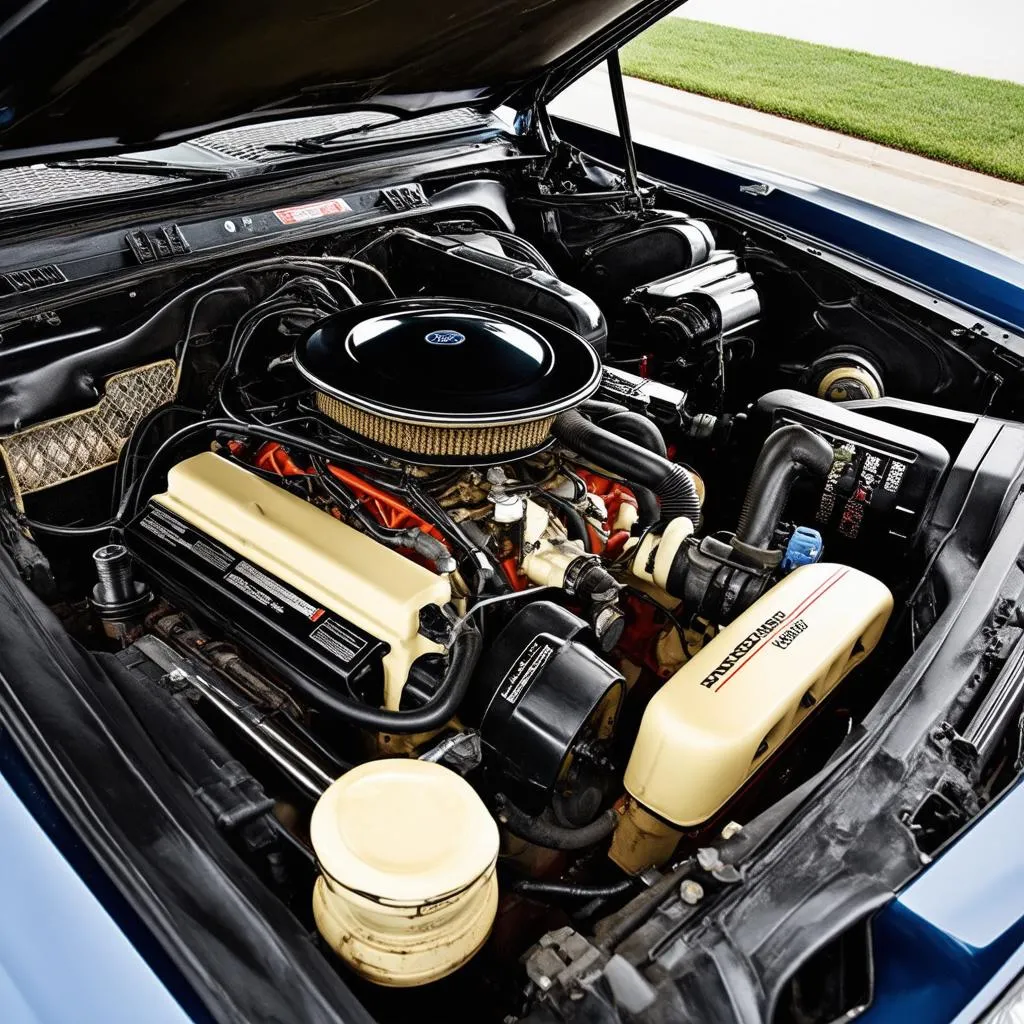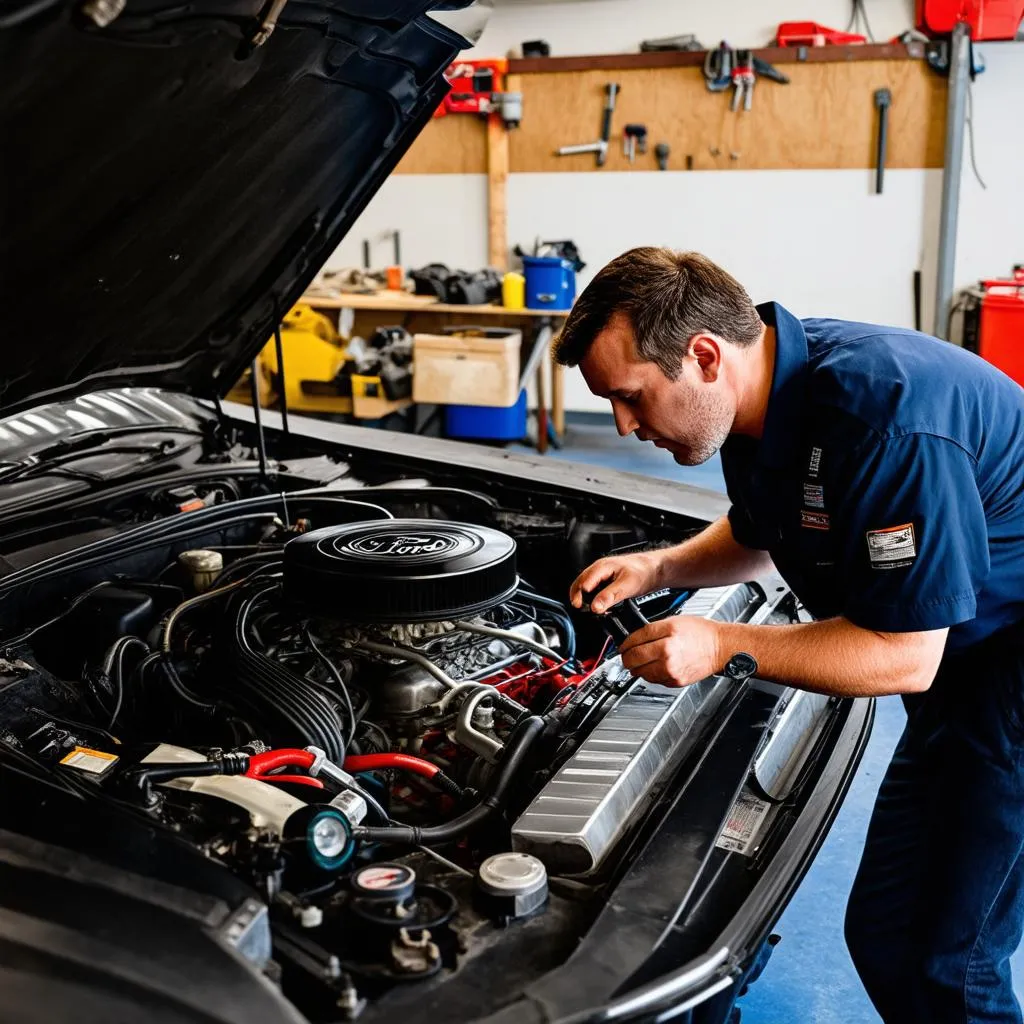Ever found yourself staring at your classic 1987 Mustang GT’s engine bay, a little unsure about how to diagnose that pesky check engine light? You’re not alone. The world of automotive diagnostics was a different beast back then. Today’s question takes us on a nostalgic trip back to the era of big hair, bigger engines, and the dawn of onboard diagnostics.
Unraveling the Mystery of the ’87 Mustang GT and OBD
Before we pop the hood, let’s break down what we’re dealing with. “OBD” stands for On-Board Diagnostics, a system designed to monitor your car’s emissions and engine performance. Think of it as your car’s early warning system.
So, does your 1987 Mustang Gt Have An Obd port?
The short answer is no, not in the way we understand it today. The 1987 Mustang GT predates the standardized OBD II protocol introduced in 1996.
A Glimpse into Automotive History
Imagine yourself at a car show, admiring a pristine ’87 Mustang GT. Its owner, a seasoned mechanic named Frank, leans in and says, “Back then, we relied on good old-fashioned know-how and a few basic diagnostic tools.”
Frank’s words ring true. Before OBD II became the norm, manufacturers used their own proprietary diagnostic systems. This meant that mechanics often needed specialized equipment for each make and model.
The Precursor to OBD: EEC-IV
While your 1987 Mustang GT might not have a modern OBD port, it does have something called an EEC-IV system (Electronic Engine Control). This system used a Self-Test connector, often located under the hood or dash, to retrieve basic diagnostic trouble codes.
Think of the EEC-IV as the grandfather of OBD. It was a rudimentary system, but it paved the way for the standardized diagnostics we rely on today.
Navigating Diagnostics for your Classic Mustang
Don’t despair! Even though your 1987 Mustang GT doesn’t have a modern OBD II port, there are still ways to diagnose and troubleshoot issues.
-
Consult the Owner’s Manual: Your owner’s manual is a treasure trove of information, including the location of the EEC-IV Self-Test connector and how to retrieve trouble codes.
-
Invest in a Code Reader: While you won’t find a standard OBD II scanner that works with your ’87 Mustang, specialized code readers are available for EEC-IV systems.
-
Seek Expert Advice: When in doubt, consult a qualified mechanic who specializes in classic Mustangs. They’ll have the experience and tools to keep your ride running smoothly.
Frequently Asked Questions
Q: Can I add an OBD II port to my 1987 Mustang GT?
A: While it’s technically possible to retrofit an OBD II system, it’s a complex and expensive undertaking that’s not recommended for most classic car owners.
Q: What are some common EEC-IV trouble codes?
A: Common codes include those related to oxygen sensors, engine coolant temperature sensors, and the Mass Air Flow (MAF) sensor.
Q: Where can I find a mechanic who specializes in classic Mustangs?
A: Online forums, local car clubs, and classic car shows are great places to connect with experienced mechanics in your area.
Beyond the Technical: The Soul of a Classic
Owning a classic car like a 1987 Mustang GT is about more than just getting from point A to point B. It’s about preserving a piece of automotive history and experiencing the joy of driving a machine that’s built with soul.
 1987 Mustang GT Engine Bay
1987 Mustang GT Engine Bay
 Mechanic Working on Classic Mustang
Mechanic Working on Classic Mustang
While modern diagnostics have their place, there’s something to be said for the hands-on approach required to keep these classics running. So, embrace the challenge, learn about your car’s unique systems, and enjoy the ride!
Need Help with Your Diagnostic Tools?
Do you need assistance setting up diagnostic software for your vehicle? Contact us on WhatsApp at +84767531508. Our team of auto repair experts is available 24/7 to help you diagnose and resolve any issues.
Keep those classic Mustangs roaring!